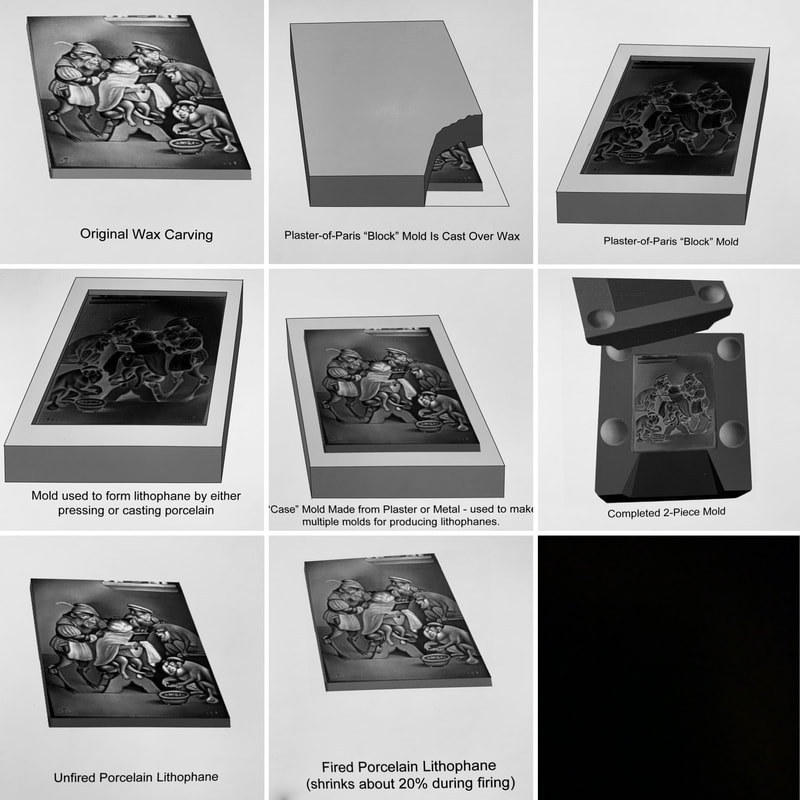Lithophanes are three-dimensional translucent porcelain plaques which when back-lit reveal detailed images. First created in Europe in the 1820s, the largest collection of this 19th century art form in the world is now on view at the Blair Museum of Lithophanes.
The name "Lithophane" is a term derived from the Greek, litho meaning stone and phainen meaning to cause to appear. This Greek derivation has proven confusing to people who might know some basic Greek, but do not know that lithophanes have nothing to do with stone or a stone product, but are made of porcelain.
Artisans would carve into a wax with small tools like what dentists use on a back-lit piece of glass. Next they would create a plaster mold of the lithophane. Then from the mold porcelain slip would be added to create a positive of the image. Finally once the porcelain has dried it is put into a kiln and fired at 2000C.
The name "Lithophane" is a term derived from the Greek, litho meaning stone and phainen meaning to cause to appear. This Greek derivation has proven confusing to people who might know some basic Greek, but do not know that lithophanes have nothing to do with stone or a stone product, but are made of porcelain.
Artisans would carve into a wax with small tools like what dentists use on a back-lit piece of glass. Next they would create a plaster mold of the lithophane. Then from the mold porcelain slip would be added to create a positive of the image. Finally once the porcelain has dried it is put into a kiln and fired at 2000C.


